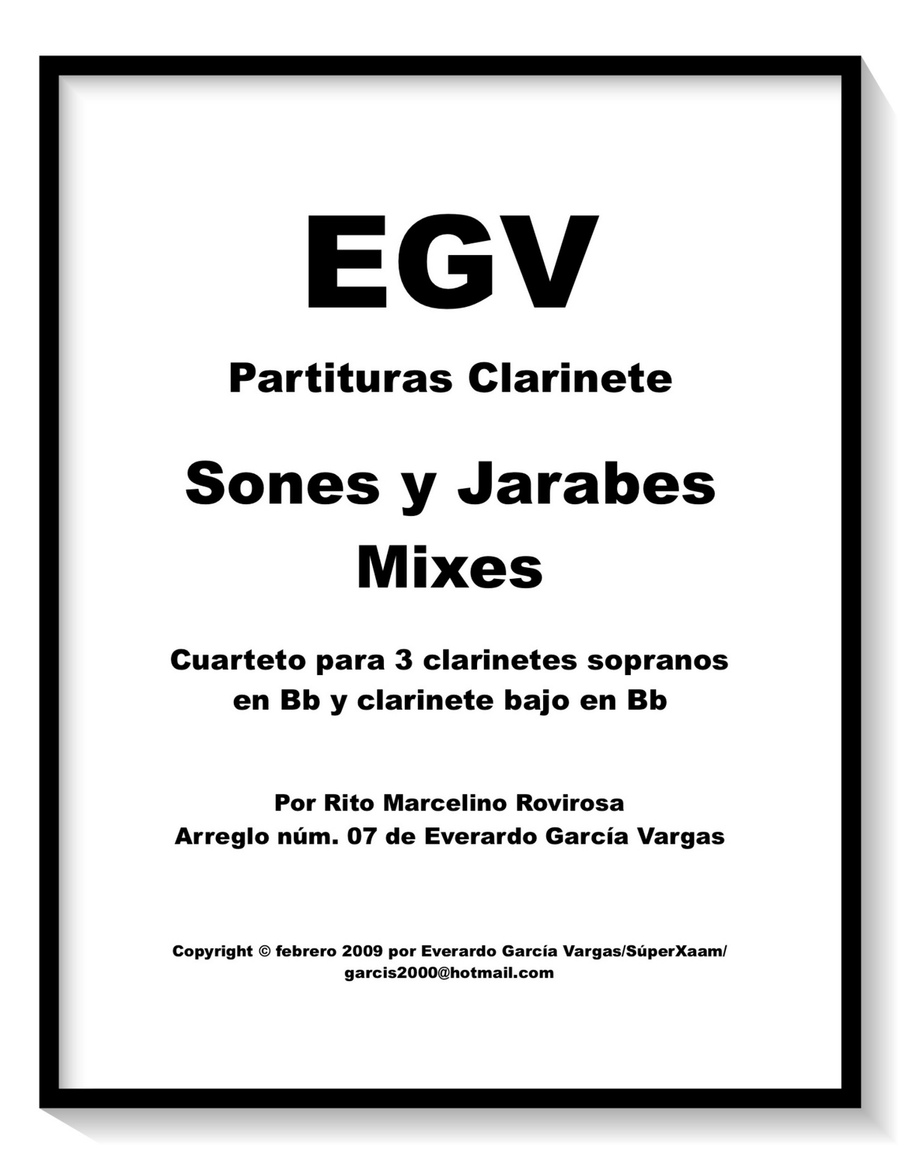Clarinet Quartet,Woodwind Ensemble - Level 3 - Digital Download SKU: A0.1240957 Composed by Rito Marcelino Rovirosa. Arranged by Everardo GarcÃa Vargas. Chamber,Classical,Holiday,Multicultural,Traditional,World. 17 pages. Everardo GarcÃa Vargas #836352. Published by Everardo GarcÃa Vargas (A0.1240957). Sones y Jarabes Mixes - Cuarteto para ClarinetesLa obra musical ceremonial âSones y Jarabes Mixesâ, compuesta por Rito Marcelino Rovirosa, es ampliamente reconocida como uno de los himnos representativos de la región Mixe. Además de ser una pieza musical, también es un baile que forma parte integral de la cultura Mixe del estado de Oaxaca, México. El mismo autor también compuso un himno especÃfico para la región titulado âHimno Mixeâ. En la tradición y costumbres de esta región, se realizan ceremonias y ritos para agradecer o pedir a las potencias naturales como el rayo, el viento, el agua, el sol, la montaña, la madre tierra y al rey âKonk ëyâ (rey bueno), quien representa el vÃnculo con lo sagrado. Estas ceremonias pueden tener como objetivo tener una buena cosecha, alejar un mal sobrenatural, mejorar las condiciones de vida, tener abundancia económica o un buen año. Durante estas ceremonias se ofrendan bebidas como tepache y mezcal, alimentos y música, incluyendo sones y jarabes para bailar.Rito Marcelino Rovirosa, es un ilustre compositor mexicano conocido como el âhijo de la sierra mixeâ, nació en Asunción Cacalotepec, Mixe, Oaxaca el 07 de abril de 1908 y falleció en Santiago Zacatepec Mixe, Oaxaca el 05 de julio de 2000 a la edad de 92 años. Rovirosa dejó un legado de más de 200 obras que se extendieron más allá de su región y fueron interpretadas por las bandas filarmónicas de casi todos los estados de la República Mexicana. Entre sus creaciones se encuentran sones y jarabes mixes, himno mixe, los mixes, fandango mixe, raza mixe, rey condoy, lustre, fiesta animada, viuda alegre, alegrÃa de mi alma, nueva esperanza, mi paisano y pájaro montañero. Sin embargo, no todas sus obras fueron conocidas o grabadas; dejó muchas inéditas e incluso escribió varias piezas a petición de otros músicos quienes le solicitaron que las dejara sin tÃtulo ni autorÃa. Marcelino Rovirosa vivió como cualquier otro campesino; dedicaba su tiempo a cuidar sus cultivos de café, maÃz y frijol. Las noches eran sus momentos favoritos para escribir sus obras inspirándose en la naturaleza, el canto de los pájaros y las convivencias con sus paisanos. Nadie hubiera imaginado que un indÃgena mixe iba a trascender con su música más allá de la frontera mixe. En la década de los años cuarenta del siglo pasado fue humillado por el mandamás de su pueblo quien lo envió a la cárcel acusándolo falsamente. Fue llevado a pie amarrado de las manos y sujetado por una cuerda por los guardianes desde su natal Asunción Cacalotepec hasta la cabecera distrital de Santiago Zacatepec un pueblo que lo adoptarÃa más tarde, después de caminar más de 10 horas en plena serranÃa fue conducido directamente a la cárcel donde permaneció durante tres años. Mientras estaba en la cárcel su creciente fama como buen músico llegó a oÃdos de las autoridades del pueblo, del agente del ministerio público, del juez que llevaba su caso y también de don Luis RodrÃguez Jacob, lÃder de la comunidad y del distrito mixe. A pesar de estar privado de su libertad gozaba de algunos tratos preferenciales que los demás no tenÃan. Fue incluido en la banda de música que viajó a la ciudad de Oaxaca, junto con las autoridades municipales para participar en un evento oficial que resultó ser todo un éxito. Al término de la misión y de regreso a Zacatepec don Luis RodrÃguez encomendó a los maestros de música y al distinguido Marcelino Rovirosa que escribieran una melodÃa representativa de la región mixe. Rito regresó como era natural a la cárcel municipal y puso manos a la obra; le facilitaron papel pautado y pluma y en pocos dÃas la obra solicitada quedó lista y lo tituló âfandango mixeâ nombre sugerido por don Luis RodrÃguez.
